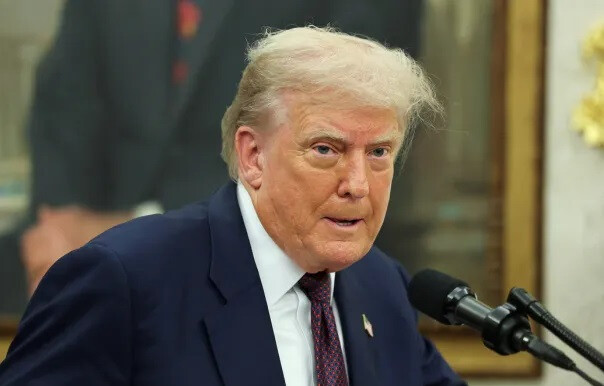
WASHINGTON — President Donald Trump has signed a new executive order imposing an additional 25% tariff on a broad range of products from India, citing the country's continued import of Russian crude oil and refined petroleum products. The move, effective August 27, raises the total tariff rate on affected Indian goods to a staggering 50% and marks a significant escalation in the ongoing geopolitical and trade tensions between the two nations.
The executive order, signed on August 6, comes just days after the president publicly threatened to "significantly raise" tariffs on New Delhi if it did not cease its purchases of Russian energy. The administration asserts that India’s role as a major buyer of Russian oil directly undermines Western sanctions designed to cripple Moscow’s war machine in Ukraine.
"I have determined that the government of India is directly and indirectly importing petroleum products from the Russian Federation," President Trump stated in the executive order. "Pursuant to the authority vested in me by law, a supplemental tariff rate of 25% shall be applied to all goods of Indian origin imported into the territory of the United States."
The announcement was met with immediate backlash from New Delhi, which labeled the action "unjust and irrational." The Indian Ministry of External Affairs issued a statement expressing "deep regret" over the decision, arguing that its energy import policy is driven by market factors and the imperative of ensuring energy security for its 1.4 billion citizens.
"Our final goal is to secure the energy security of 1.4 billion Indian citizens, and we import based on market factors," the statement read. "It is extremely regrettable that additional tariffs have been imposed on a country for acting in its own national interest, as other nations do."
A Global Strategy with Targeted Consequences
The imposition of these new tariffs is viewed by analysts as a dual-pronged strategy by the Trump administration. First, it serves as a powerful lever in the stalled trade negotiations with India, which have seen little progress since the start of the new administration. The second, more pressing objective is to target the financial lifelines supporting Russia's military campaign in Ukraine.
Since the war began, India has become one of the largest buyers of discounted Russian oil, significantly increasing its imports and providing a crucial revenue stream for the Kremlin. This surge in trade has frustrated the U.S. and its European allies, who have sought to enforce a price cap on Russian oil and reduce Moscow's income from energy sales. New Delhi has consistently defended its actions, pointing out that its purchases are necessary for economic stability and that it is not violating any international laws.
The timing of the announcement is also notable. It was made public shortly after Steve Witkoff, a special envoy and close associate of President Trump, returned from a meeting with Russian President Vladimir Putin in Moscow. Witkoff’s mission was reportedly an attempt to broker a ceasefire in Ukraine. The simultaneous pressure on India seems to signal a comprehensive approach: attempting diplomacy with Russia while penalizing countries that continue to provide it with financial support.
President Trump had previously warned on August 4 that he would impose a "secondary tariff" on any country trading with Russia if Moscow did not agree to a ceasefire by August 8. While the new tariffs on India predate that ultimatum, they are widely seen as the first salvo in this promised series of actions, targeting a major partner in the developing world.
Economic Fallout and Geopolitical Ripple Effects
The economic consequences of a 50% tariff on Indian goods are expected to be substantial. India’s exports to the United States, valued at tens of billions of dollars annually, include a wide range of products from textiles and pharmaceuticals to jewelry and automotive components. The tariff hike could severely impact Indian exporters, leading to significant job losses and a downturn in key sectors. For American consumers and businesses, the tariffs could result in higher prices for a variety of imported goods and disrupt established supply chains.
Economists and trade experts are also warning of a potential domino effect. If the U.S. aggressively pursues tariffs against other countries that continue to trade with Russia, it could lead to a fragmentation of the global economy into competing blocs. The Indian government is now considering retaliatory measures, which could include tariffs on American products and a deeper commitment to diversifying its trade relationships away from the U.S.
The move also places a severe strain on the "Quad" alliance—a strategic security dialogue between the U.S., India, Australia, and Japan—which is aimed at countering China's growing influence in the Indo-Pacific. Analysts suggest that such a punitive measure against a key member could weaken the alliance's foundation and push New Delhi to further assert its "strategic autonomy," balancing its relationships with Washington, Moscow, and Beijing.
As the August 27 deadline for the tariffs to take effect approaches, the diplomatic standoff between the U.S. and India appears poised to deepen. With New Delhi vowing not to back down on its energy policy and Washington signaling an aggressive stance against Russia's trading partners, the global geopolitical landscape is set for a period of heightened uncertainty and economic turbulence.
[Copyright (c) Global Economic Times. All Rights Reserved.]






























